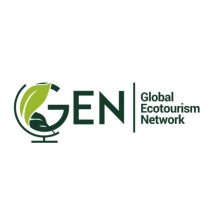- Importance of Local Communities
-
- Community Empowerment: Recognizing the crucial role of local communities in wildlife conservation.
- Traditional Knowledge: Valuing the traditional ecological knowledge and practices of local communities.
- Collaborative Efforts: Building partnerships between conservationists and local communities for effective conservation.
- Economic Benefits: Highlighting how conservation projects can provide economic opportunities for local communities.
- Cultural Preservation: Supporting the preservation of cultural heritage through conservation efforts.
- Education and Awareness: Promoting environmental education and awareness within local communities.
- Community-Led Initiatives: Showcasing successful community-led conservation projects and their impacts.
- Sustainable Development: Encouraging sustainable development practices that benefit both wildlife and local communities.
- Climate Change
-
- Impact on Wildlife: Understanding how climate change affects wildlife populations and ecosystems.
- Adaptation Strategies: Exploring strategies that species use to adapt to changing climates.
- Mitigation Efforts: Discuss actions that can be taken to mitigate the effects of climate change on wildlife.
- Global Cooperation: Emphasizing the need for international collaboration to address climate change challenges.
- Community Action: Encouraging local communities to participate in climate change mitigation efforts.
- Policy and Advocacy: Highlighting the importance of policy changes and advocacy for climate action.
- Research and Data: Sharing recent research findings on climate change impacts and solutions.
- Raising Awareness: Promoting awareness about the connection between climate change and wildlife conservation.
- Illicit Wildlife Trade
-
- Understanding the Trade: Examining the scale and impact of illicit wildlife trade on species and ecosystems.
- Trafficking Networks: Identifying the networks and methods used in illegal wildlife trafficking.
- Conservation Consequences: Discussing the ecological and conservation consequences of illegal wildlife trade.
- Legal Frameworks: Understanding the legal frameworks and international agreements aimed at combating wildlife trafficking.
- Enforcement Challenges: Highlighting the challenges faced by law enforcement in tackling wildlife crime.
- Community Involvement: Encouraging local communities to report and prevent illegal wildlife trade.
- Raising Awareness: Promoting public awareness and education about the issues surrounding wildlife trafficking.
- Supporting Rehabilitation: Discussing efforts to rehabilitate and release trafficked wildlife back into their natural habitats.
- Backyard Wildlife
-
- Local Biodiversity: Exploring the variety of wildlife that can be found in urban and suburban backyards.
- Habitat Creation: Learning how to create wildlife-friendly habitats in residential areas.
- Conservation at Home: Encouraging individuals to take conservation actions in their own backyards.
- Wildlife-Friendly Practices: Sharing tips for making gardens and outdoor spaces more inviting for wildlife.
- Educational Opportunities: Using backyard wildlife as a tool for education and engagement with nature.
- Monitoring and Reporting: Encouraging the monitoring and reporting of backyard wildlife sightings.
- Community Engagement: Building community initiatives to enhance local biodiversity and wildlife conservation.
- Promoting Stewardship: Fostering a sense of responsibility and stewardship for local wildlife.
- Education and Awareness: Wildlife and Habitats
-
- Informing the Public: Using education to raise awareness about the importance of wildlife and their habitats.
- Interactive Learning: Creating engaging educational programs that connect people with wildlife conservation.
- Promoting Action: Encouraging individuals and communities to take action for wildlife protection.
- Educational Resources: Providing resources and tools for teaching about wildlife and habitat conservation.
- Collaborative Efforts: Partnering with schools, organizations, and communities to spread conservation knowledge.
- Success Stories: Sharing examples of successful educational initiatives and their impact on wildlife conservation.
- Creating Advocates: Inspiring the next generation of wildlife advocates through education.
- Evaluating Impact: Assessing the effectiveness of educational programs in promoting wildlife conservation.
- Ecotourism: Various Destinations
-
- Exploring Destinations: Showcasing diverse ecotourism destinations and their unique offerings.
- Sustainable Travel: Emphasizing the importance of sustainable travel practices in ecotourism.
- Conservation Impact: Understanding how ecotourism can positively impact conservation efforts.
- Cultural Experiences: Highlighting how ecotourism can provide meaningful cultural experiences for travelers.
- Community Benefits: Discussing the economic and social benefits of ecotourism for local communities.
- Destination Management: Exploring strategies for managing ecotourism destinations sustainably.
- Traveler Education: Educating travelers about responsible behaviors and practices in ecotourism destinations.
- Success Stories: Sharing successful examples of ecotourism projects and their outcomes.
- Ecolodges: Showcasing Good Practices
-
- Sustainable Design: Highlighting eco-friendly design principles used in eco-lodges.
- Green Practices: Exploring best practices for reducing environmental impact in lodge operations.
- Community Engagement: Showcasing how ecolodges support and involve local communities.
- Conservation Contributions: Discussing the role of ecolodges in supporting conservation efforts.
- Guest Experience: Providing insights into how ecolodges create memorable and sustainable guest experiences.
- Resource Efficiency: Sharing strategies for efficient use of resources, such as water and energy, in eco-lodges.
- Innovative Solutions: Showcasing innovative technologies and practices used in ecolodge operations.
- Impact Assessment: Evaluating the environmental and social impacts of ecolodge practices.
- Waste Management
-
- Reducing Waste: Discussing strategies for minimizing waste generation in various settings.
- Recycling Practices: Exploring effective recycling practices and programs.
- Composting: Learning about composting techniques and their benefits for waste management.
- Waste Separation: Understanding the importance of separating waste for proper disposal and recycling.
- Innovative Solutions: Showcasing innovative approaches to waste management and reduction.
- Community Involvement: Encouraging community participation in waste management initiatives.
- Impact Assessment: Evaluating the environmental impact of effective waste management practices.
- Educational Programs: Promoting educational programs to raise awareness about waste management.
- How to Be an Ecotourist
-
- Ethical Travel: Learning the principles of ethical travel and its importance in ecotourism.
- Minimizing Impact: Understanding how to minimize your environmental impact while traveling.
- Supporting Conservation: Exploring ways to support conservation efforts through ecotourism.
- Respecting Cultures: Promoting respectful interactions with local cultures and communities.
- Choosing Sustainable Options: Identifying and selecting sustainable travel and accommodation options.
- Educational Engagement: Engaging in educational experiences that enhance your understanding of the destinations.
- Responsible Behavior: Adopting responsible behaviors to protect wildlife and natural habitats.
- Sharing Knowledge: Encouraging others to follow ecotourism practices and promote sustainable travel.
- Destination Management
-
- Sustainable Development: Exploring strategies for managing tourism destinations sustainably.
- Visitor Impact: Understanding the impact of tourism on local environments and communities.
- Planning and Design: Discussing effective planning and design approaches for sustainable destination management.
- Community Engagement: Involving local communities in destination management and decision-making.
- Resource Management: Managing natural and cultural resources to ensure long-term sustainability.
- Marketing and Promotion: Promoting destinations in a way that highlights their sustainability and conservation efforts.
- Monitoring and Evaluation: Implementing systems to monitor and evaluate the sustainability of tourism practices.
- Success Stories: Sharing examples of successful destination management practices and their outcomes.
- Seasonality Management
-
- Understanding Seasonality: Exploring the effects of seasonal changes on tourism destinations.
- Balancing Visitor Flow: Developing strategies to manage visitor flow during peak and off-peak seasons.
- Economic Impact: Assessing the economic impacts of seasonality on local businesses and communities.
- Marketing Strategies: Creating marketing strategies to attract visitors year-round.
- Resource Allocation: Managing resources effectively to address seasonal variations in demand.
- Sustainable Practices: Implementing sustainable practices to cope with seasonal challenges.
- Community Involvement: Engaging local communities in seasonality management efforts.
- Case Studies: Highlighting successful examples of seasonality management in tourism destinations.
- Code of Conduct
-
- Ethical Guidelines: Understanding the ethical guidelines for responsible tourism and conservation.
- Respect for Nature: Promoting respect for wildlife and natural environments during travel.
- Cultural Sensitivity: Emphasizing the importance of cultural sensitivity and respect for local communities.
- Sustainable Practices: Adopting sustainable practices to minimize your impact on destinations.
- Responsible Behavior: Encouraging responsible behavior to ensure a positive impact on ecosystems and communities.
- Educational Programs: Providing education on codes of conduct for tourists and travelers.
- Reporting Issues: Encouraging the reporting of any unethical or harmful behavior encountered during travel.
- Promoting Advocacy: Advocating for the adoption of codes of conduct within the tourism industry.
- Creating Wildlife Habitats
-
- Habitat Design: Learning about designing and creating effective wildlife habitats.
- Biodiversity Support: Understanding how to create habitats that support diverse wildlife species.
- Restoration Projects: Exploring habitat restoration projects and their impacts on local wildlife.
- Native Plants: Incorporating native plants and features to enhance habitat quality.
- Community Involvement: Engaging communities in habitat creation and maintenance efforts.
- Monitoring Success: Implementing monitoring systems to assess the success of habitat creation efforts.
- Educational Outreach: Promoting education about habitat creation and its benefits for wildlife.
- Success Stories: Sharing successful examples of habitat creation and their positive outcomes for wildlife.
-
General
- CEOs and Managers on Conservation
-
- Leadership Impact: Exploring how top executives and managers drive conservation initiatives within their organizations.
- Strategic Vision: Understanding the strategic vision of CEOs and managers for integrating conservation into business models.
- Resource Allocation: Discussing how leaders allocate resources and prioritize conservation efforts.
- Corporate Responsibility: Highlighting the role of corporate social responsibility in advancing conservation goals.
- Partnership Building: Examining how CEOs and managers build partnerships with conservation organizations and stakeholders.
- Innovation in Conservation: Showcasing innovative approaches and solutions led by top executives for conservation challenges.
- Success Stories: Sharing successful conservation projects spearheaded by CEOs and managers.
- Future Directions: Discussing future trends and directions for corporate involvement in conservation.
- Social Media Good Practices
-
- Effective Campaigns: Exploring successful social media campaigns that raise awareness about conservation issues.
- Engaging Content: Understanding how to create engaging and impactful content for conservation messaging.
- Audience Interaction: Learning strategies for interacting with and growing a social media audience interested in conservation.
- Visual Storytelling: Utilizing visual storytelling techniques to capture attention and communicate conservation messages.
- Ethical Practices: Discussing ethical considerations and best practices for promoting conservation on social media.
- Partnerships and Collaborations: Exploring how partnerships with influencers and organizations can amplify conservation messages.
- Monitoring and Analytics: Using analytics to measure the impact of social media efforts and adjust strategies.
- Community Building: Building a supportive online community focused on conservation issues.
- Stalwarts of Wildlife Conservation: Erstwhile & Present
-
- Historical Perspectives: Reflecting on the contributions of past conservation leaders and their impact on current practices.
- Current Influencers: Highlighting the achievements and influence of contemporary conservation leaders.
- Lessons Learned: Discussing the lessons learned from both past and present conservation efforts.
- Innovative Approaches: Showcasing innovative strategies and methodologies used by leading conservationists.
- Success Stories: Sharing inspiring success stories from renowned conservation figures.
- Challenges and Solutions: Examining the challenges faced by past and present leaders and their solutions.
- Legacy Building: Understanding how conservation leaders build and sustain a lasting legacy.
- Future Prospects: Exploring the future direction of wildlife conservation inspired by both historical and current leaders.
- Technology in Use
-
- Tech Innovations: Discovering cutting-edge technologies being used to advance wildlife conservation.
- Data Collection: Exploring how technology improves data collection and monitoring of wildlife populations.
- Tracking and Surveillance: Learning about technological advancements in tracking and surveillance of wildlife.
- Habitat Management: Examining how technology aids in the management and restoration of wildlife habitats.
- Community Engagement: Utilizing technology to engage communities in conservation efforts and education.
- Conservation Drones: Showcasing the use of drones for monitoring and protecting wildlife and their habitats.
- AI and Machine Learning: Understanding how AI and machine learning are transforming wildlife research and conservation.
- Future Trends: Discussing emerging technologies and their potential impact on wildlife conservation.
- Top Methods of Creating Micro Habitats
-
- Design Principles: Learning the key design principles for creating effective microhabitats.
- Biodiversity Enhancement: Exploring methods to enhance biodiversity through micro habitat creation.
- Native Plants: Incorporating native plants to support local wildlife in microhabitats.
- Habitat Features: Adding essential features such as water sources and shelter to attract wildlife.
- Urban Integration: Integrating micro habitats into urban and suburban environments for wildlife support.
- Community Involvement: Engaging local communities in the creation and maintenance of microhabitats.
- Monitoring Success: Implementing strategies to monitor and evaluate the success of microhabitats.
- Educational Outreach: Using microhabitats as educational tools to promote wildlife conservation and awareness.




